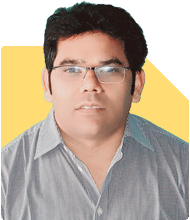I am a 40-year-old woman working in a corporate role with a monthly salary of 85,000. I am staying with my in laws and my 8 year old son. My husband earns Rs 1.2 lakh and takes care of the house expenses. My 68 year old MIL is diabetic and a heart patient. Her monthly expenses total to 25,000 to 30,000, excluding hospital visits and random scans. My home loan EMI is Rs 55,000. We are barely able to save much for our future. How can we create a better savings plan and reduce financial stress?
Ans: You are managing many responsibilities. It is not easy. Balancing income, expenses, and savings is a big task. But it is possible with thoughtful planning.
Below is a complete and structured guidance to reduce your financial stress and improve savings.
Let us go step by step.
?
Assess Current Financial Position
Your combined monthly income is Rs. 2.05 lakh. That is a strong starting point.
Home loan EMI is Rs. 55,000. That is over 25% of your income. It needs attention.
Your mother-in-law’s expenses of Rs. 25,000–30,000 are fixed and necessary.
Household and lifestyle expenses are managed by your husband. That gives you space to plan.
But very little is getting saved now. This must change with a clear roadmap.
?
Track and Categorise All Expenses
Start with writing down every rupee spent in a month.
Use simple categories. Example: EMI, groceries, medicines, education, transport.
Check for hidden spends. Subscriptions, dining out, online purchases, etc.
See which items are essential and which are flexible.
This small habit helps reduce wastage. It gives power over your money.
You will discover opportunities to save at least 5–10% monthly.
Involve your husband. Financial planning is teamwork. That makes it sustainable.
?
Home Loan Strategy and EMI Load
Rs. 55,000 EMI is high. You must check your loan tenure and rate again.
If the loan is more than 15 years old, consider refinancing to lower rate.
Don’t rush to prepay unless you are saving enough for emergencies first.
If your savings increase later, partial prepayments every year can reduce burden.
A Certified Financial Planner can help you assess interest vs savings balance.
Keeping EMI under 40% of income is ideal. Work towards that goal.
?
Emergency Medical Expenses for Mother-in-Law
Her health condition needs structured medical planning.
First priority: Check her current health cover. Does she have insurance?
If not, see if a senior citizen policy is possible. Costs will be higher at this age.
If insurance is not possible, start a dedicated medical fund for her.
Keep Rs. 5,000–Rs. 7,000 aside monthly in a low-risk instrument.
This helps reduce shock from hospital bills or scans.
Keep hospital records in order. Use preventive check-ups to reduce surprise expenses.
?
Emergency Fund Creation
You need a safety fund of 4 to 6 months of expenses.
This protects you in case of job loss, illness, or sudden repair costs.
Even Rs. 5,000 saved monthly can build this in a year or two.
Use low-risk, liquid tools. Do not mix this with investments.
Emergency fund should be easy to withdraw, without penalty.
?
Child’s Education Planning
Your son is 8 years old. In 10 years, college costs will start.
Higher education is getting more expensive. You must start a separate fund.
Begin a disciplined investment of Rs. 5,000–Rs. 7,000 per month.
Prioritise long-term, actively managed mutual funds through a CFP.
Don’t use direct mutual funds. Regular plans give access to expert reviews and advice.
Avoid ULIPs, endowment plans. These give low returns and poor flexibility.
Check this goal every year and increase SIP when income grows.
Small early efforts give big results later through compounding.
?
Improve Savings Flow
You may feel there is no money to save now. But small steps help.
Start with fixed savings immediately after salary credit. This is “pay yourself first”.
Even Rs. 3,000 to Rs. 5,000 savings monthly builds habit and confidence.
Use auto-debit to mutual funds. Keep it separate from daily expenses account.
Don’t wait for “surplus”. Create savings as a non-negotiable part of monthly life.
?
Insurance and Risk Protection
You must check your own term life insurance cover.
Minimum cover should be 10–12 times annual income. Your husband too needs the same.
Health insurance for all family members must be active. Confirm claim limits.
One hospitalisation without insurance can set you back financially for years.
Don’t rely on employer health plans only. Buy a personal policy too.
If existing policies are LIC or ULIP type, recheck their benefits.
If returns are low, surrender them after 5 years and shift to mutual funds.
?
Joint Family Expense Sharing
Currently your husband handles household costs. That is generous support.
But as your income grows, split some expenses. This increases savings from both sides.
Joint saving goals for child, emergency fund, or a family vacation helps motivation.
Discuss money matters openly. Hiding expenses or worries creates stress later.
?
Avoid Debt Traps and Buy Wisely
Don’t take personal loans or credit card EMI options unless very urgent.
Avoid buying expensive gadgets, furniture, or holidays on credit.
Focus spending on needs, not wants. That creates long-term peace.
Track EMI-to-income ratio regularly. Keep it under 40% total, including home loan.
?
Invest in Growth-Based Instruments
Once emergency fund is ready, start equity mutual fund SIPs.
Do not use index funds. They give limited returns and copy market average.
Choose well-managed active funds through a certified MFD and CFP.
They give better risk control, fund rebalancing, and personalised guidance.
Rebalance your investments every year with help of a professional.
Avoid direct equity unless you have knowledge, time, and strong risk appetite.
For short-term goals, use safe options like short-term mutual funds or RDs.
?
Use Bonuses and Increments Wisely
Any yearly bonus or appraisal should partly go to savings.
Avoid spending full bonus on gadgets or events. Use at least 50% for goals.
Increase SIP amount every time your salary grows. Even Rs. 1,000–2,000 more helps.
Stay consistent. Skipping SIP for small reasons breaks the wealth-building chain.
?
Involve Your Son in Basic Financial Learning
Teach your son simple money lessons early.
Let him understand value of savings, budgeting, and delayed gratification.
This will help him grow into a responsible adult.
Financial literacy is as important as academic knowledge.
You are his best teacher. Your daily actions teach more than words.
?
Mental and Emotional Health Check
Financial pressure can cause emotional stress in families.
Take one day a month to review your money matters calmly.
Don’t compare with others. Every family’s journey is different.
Seek help from Certified Financial Planner to structure your roadmap.
Set realistic goals. Celebrate small wins. Stay hopeful. Progress takes time.
?
Avoid Common Investment Mistakes
Don’t invest in gold chits or unregistered chit funds.
Don’t mix insurance and investments. That reduces both benefits.
Don’t stop SIPs during market falls. That is when they benefit most.
Don’t rely only on FDs for long-term goals. They lose to inflation.
Don’t trust quick-return schemes. They often lead to scams.
?
Final Insights
Your income is strong. But rising expenses and loan burden need balance.
Start with a written family budget. Identify cuttable costs.
Build emergency fund. Ensure full insurance coverage.
Begin long-term SIPs for child’s education and retirement.
Don’t aim for perfection. Consistency is more powerful than big steps.
Involve your husband and create joint financial goals.
Track progress every 6 months. Adjust based on income and health changes.
Stay disciplined. With patience, you can achieve financial security.
Consider a professional review once a year with a Certified Financial Planner.
That gives clarity, direction, and peace of mind.
Best Regards,
?
K. Ramalingam, MBA, CFP,
?
Chief Financial Planner,
?
www.holisticinvestment.in
https://www.youtube.com/@HolisticInvestment




























